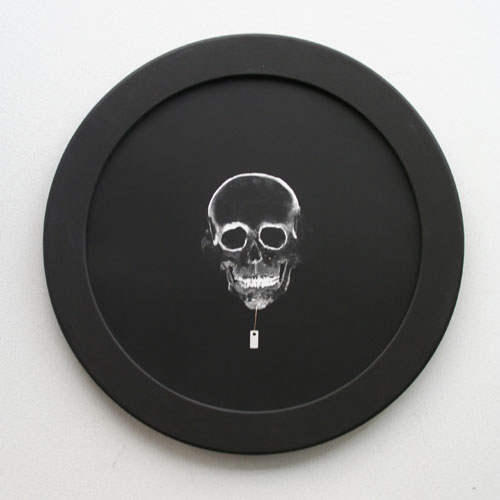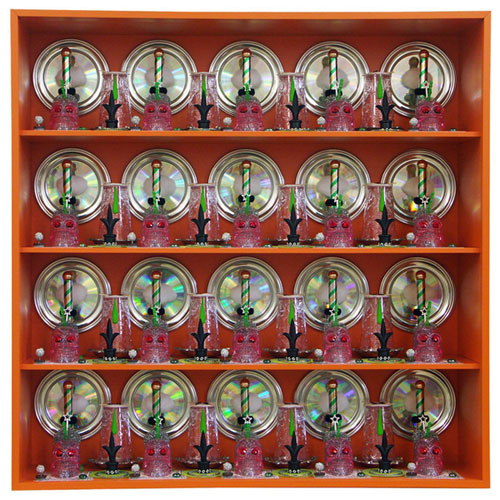| EXHIBITIONS NEWS PRESS ABOUT US CONTACT |
|||||
| REPRESENTED ARTISTS | BERTILLE BAK | GWENAEL BELANGER | DEXTER DYMOKE | ANTTI LAITINEN | |
| MARKO MAETAMM | YUDI NOOR | OLIVER PIETSCH | KIM RUGG | ||
| BETTINA SAMSON | SINTA WERNER | ||||
ET
PENDANT CE TEMPS ...
Philippe Favier, Hervé Graumann, Kevin Francis
Gray, Markus Hansen, Rosie Leventon & Kate Street
4 JULY – 10 AUGUST
Emerging in the sixteenth century, Vanitas are pictorial representations exploring the triumph of death and the futility of human activities. A theme regularly revisited throughout the centuries, what have vanitas become today? What remains of the philosophical, theological and moral symbols of this baroque model? Freed from their ancestral codes, contemporary vanitas still inevitably recall the certainty of death and the passing of time. Whereas baroque vanitas conveyed an exacerbated fear of death, their contemporary counterparts are today evocative of desensitized allegories attesting to our neutralized concern towards mortality. Defined by a freedom of interpretation caused by their desacrilization and secularization, contemporary vanitas today present heterogeneous proposals - from the revisiting of certain symbols of the classical vanitas through a personal language, to the presentation of works which offer a psychological approach to the subject, ultimately placing the viewer in a state of affective awareness.
Philippe Favier invites us to participate in his inner travels through the creation of onirical locations which he depicts with a sense of irony and acuity. Working essentially in small format and with minute precision, Favier’s world is flourished with an abundance of small details and the recurring character of the skeleton which undeniably mocks death and human vanitas. His minuscule figures inhabit the gigantism of our world which is explored with cynicism and absurdity. Favier intends to create an encounter with the viewer which is emphasized by the serial nature of his works. The work “Lucky One” is a series of photograms which originate from the painting of a skull on glass. The varying thicknesses of the paint on the glass result in a detailed and sophisticated image. This complex merging of intricacy and simplicity is also encountered in Favier’s particular attention to literature which is conveyed through the use of puns in his carefully chosen titles.

Philippe FAVIER, LUCKY ONE - Les pirates (XVI), 2007
Photogram, on glass developped onto fibre-based paper, 36,20 x 36,20 cm
(courtesy the artist and Guy Bartschi gallery, Geneva)
Hervé Graumann constructs rhythmic and ornamental arrangements composed of trivial, worthless domestic objects which are endlessly repeated to create the illusion of infinity reminiscent of kaleidoscopic images. These 3D compositions are suggestive of classical vanitas in the way the elements are traditionally displayed in the style of a still life. Graumann derisively plays with this idea by diverting the original system of presentation through the use of repetition. The resulting patterns reveal a subtlety and analytical potential by the choice of each object – selected for their formal quality and mass-produced nature - and the way they produce a new aesthetic narrative. Graumann also reinforces this process of ironic transformations by photographing his compositions in order to present them as a 2D picture. This shift in systems emphasizes the questions of perspective and status of the image.

Hervé GRAUMANN, Vertical Pattern-Square Orange, 2007, 102 x 102 x 25 cm
(courtesy the artist and Guy Bartschi gallery, Geneva)
Constructed out of cast resin and glass crystals, Kevin Francis Gray’s sculptures merge classical forms and techniques with an urban contemporary aesthetic. Veiled life-size figures dressed in modern-day streetwear stand serenely and hauntingly still - infusing the space with a sinister mood. Gray’s choice and treatment of materials are reminiscent of old masters and yet his contemporary renditions, with the smooth reflective surface, project a sense of timelessness to the realities addressed in his works. The figures often represent marginalized youths – empathically fusing parables of society and culture with the present-day psychological attitude and outlook. Their concealed face paradoxically reveals a great deal about the subject – the curtain of glass crystals although creating a dynamic flow to the work hides a sombre reality which creates yet another play on oppositions which is so present in Gray’s work.
In Markus Hansen’s video “Other People’s Feelings”, we are presented with a sequence of photographs of double portraits depicting the artist and the sitter as double. Incarnating the sitter, Hansen strives to re-enact their emotions, postures and facial expressions, completely transcending the importance of physical resemblance and critiquing the artificiality of the concept of “difference”. This empathic exercise enables him to get closer to an emotional state, creating a profound connection between himself and his “double”. These portraits, he says, are about “how we inhabit each other, reside in each other, and how we always leave traces in each other”. This fundamental connection creates a tension between the supreme illusion created by the apparent mirror-image and the actualisation of an “in-between” specular space.
Rosie Leventon makes indoor and outdoor sculptural installations by using a broad variety of materials from human hair to recycled central heating pipes. Applying her interest in archaeology to her artistic practice, Leventon uses recycled materials to create work which re-appraises our historical provenance – each of us having inherited a personal history which has influenced the way our society has evolved. Her psychological approach to the archaeology of a space implies that she will often peel back layers upon layers of modern day living to reveal something lost or forgotten. Incorporating elements of surprise or wry humour, Leventon’s objective is to create an environment where the viewer can interact and explore the work – occasionally possessing vaguely menacing connotations, her constructed scenes can leave the viewer with the impression that he has inadvertently strayed into a place where some catastrophic event has taken place and thus exposing the primary fear present in each one of us.
Kate Street’s work consists of wall-based sculptures which are made up of intricately crafted components often tinged with sombre qualities. Striking a balance between the theatrical and the absurd, the romantic and the deathly, Street uses words and familiar sayings as a starting point to create sculptures tinged with a tongue-in-cheek approach to language. Investigating the semiotics of communication as a vehicle in which to convey abstract meaning and associations of desire, she explores the boundaries surrounding the dual aspect of her work – the associations created between the imagery and an abstract form of communication. Street’s “Natures Mortes” merge elements which are not merely contemporary symbols but also the visual representations of her response to language – the resulting sculpture which at first glance is a baroque and intricate object, on close inspection begins to play with our most basic insecurities and discomforts.
![]()
© NETTIE HORN